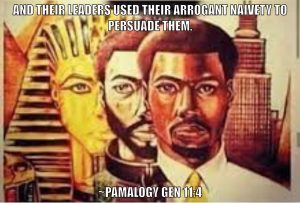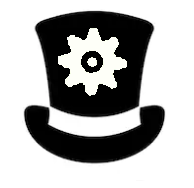GENESIS
XI
contradictions of the straw gods
1Now the whole earth spoke different languages and had different gods even after the alleged flood, which conveniently placed all human history into the hands of writers. 2And their stories of Earth’s history were in contradiction with one another.

3And many supposed that they alone possessed the truth, though they had much in common. 4And their leaders used their arrogant naivety to persuade them. 5And divine authority was called upon because they were superstitious. 6And disobedience to the supposedly divine commands was often punishable through human enforcement. 7And disbelief in the straw gods approved by the state was sometimes punishable by death.
Mayan gods
8And the head of the gods of the Mayans was Itzamna, whom they said created humankind and taught their priests to write beginning with Kinich Ahau Itzamna. 9And their leaders were regarded as their children. 10And Itzamna was considered the god of the heavens, day and night and took the form of lesser gods, Kunab Hu as creator, Kinich Ahau, the sun god. 11 And their moon goddess, Ixchel, was said to be his wife and the mother of thirteen other gods and goddesses who multiplied to hundreds of other gods and goddesses. 12Among them were the Bacab, the four gods they supposed held up the four corners of the Earth, the gods of rain and of corn, of night, of stars, of paradise, of thunder.
fertility worship and human sacrifice
13And Ixchel was their goddess of fertility and was considered wise, preserving the Mayan calendar and administering medicine and carrying a jug of water for rain and plenty. 14And in the hope of fertility, they offered human sacrifices to their straw gods, Tohil, Hunahpu and Jacawitz, beheading and tearing out human hearts and eating their flesh and drinking their blood. 15 And their priests danced in the shorn skin of their most valiant warriors. 16For they believed they might gain life through humble and sacrificial thanksgiving in rebirth thereby.
correspondence of calendars
17And these sacrifices of the Mayan people took place at least as far back as the third century of the Christian Era up until the Spanish conquest in the seventeenth century CE. 18And they resided with the Olmec for more than a thousand years prior. 19And the earliest date of their calendar supposed a creation date of 4 Ahaw, 8 Kumk’u, which corresponded to August 11, 3114 BCE as adjusted in the time of the Roman bishop Gregory. 20And behold, are not the temples, the calendars and the hieroglyphs of the Mayans standing to this day to testify to this record?
21And the dating of creation according to the Mayans was in conflict with that according to the Hebrews, which by addition of various dates in the Torah and subsequent writings came to Sunday, October 3, 4004 BC as calculated by the English bishop James Ussher. 22And the Jews kept separate records dating from the Zuggot and Tannaim period when their Mishneh was written after the Christian Era began. 23And they believed the date of creation corresponded to October 7, 3761 BCE. 24And the rules for their calendar were not fully codified until Maimonides wrote the Mishneh Torah in the twelfth century CE. And Bishop Augustine and others pointed out that the Jews changed the dates as they copied their Hebrew text. And indeed the Greek translations from older sources indicated a creation date in 5554 BCE.
gods of Inca
25And the straw gods of the Incans were headed by the god of the sun like the Mayans and they called him Inti and Apu-Punchau. 26And he was revered according to the stages and seasons of the Sun. 27And the state cult of the Incas required that Inti be worshiped, claiming the Incan founders, beginning with Manco Capac, were his lineal descendants. 28And like the Mayans they also worshiped a moon goddess. And they named her Mama Quilla. 29And Pachamama they named the mother goddess of Earth. 30And the creator of earth they called Viracocha. 31And they said Kon was the son of Inti and Mama Quilla and was the god of wind and rain. 32And Pachamama was believed to be the wife of Pacha Kamach, a male dragon fertility god.
33And Qhapaq Hucha was the Incan practice of sacrificing children to the gods to beseech their mercy and request abundance of crops. 34For they thought that children were pure and innocent so the gods would be pleased. 35And Supay, they thought, was the god of death and of the Uku Pacha, the underworld where demons abode. 36And the beautiful women were chosen to live in temple sanctuaries and dedicate their lives to prayer as Mamaconas. 37And they were set aside for the nobles to marry.
Incan calendar
38And the calendar of the Incas was based on the planets and stars and clouds of the Milky Way Galaxy, which they perceived as a river. 39And they counted 365 day solar and 328 day lunar nights for the observance of festivals. 40And they believed that the creation of the human race was a second attempt by Viracocha on the Earth. 41For his first creation, they said, was a race of giants not good to preserve. 42Therefore he sent a flood to end their existence. 43And the Inca empire lasted only for a few centuries from its founding by Manco Capac in 1200 CE according to legend until it was overtaken by conquistadors from Spain in the sixteenth century CE. 44And many of the records of the Inca were destroyed by the Spanish but it has been said that they believed in an 800 year climate cycle, when times would change.
Aztec straw gods
45And the highest god of the Aztecs, Ometeotl, they said was self creating, both male and female, light and darkness, good and evil, fire and water, wrathful judgment and merciful forgiveness. 46And the mother of the gods, some supposed was Coatlicue, who gave birth to the moon, the stars and to Huitzilopochtli, the god of the sun and of war.
47And the four Tezcatlipocas, the straw gods of the north, south, east, west, were the children of Ometeotl. 48And Tezcatlipoca they supposed was the god from the north, colored black, of deceit, of judgment, of sorcery, of the night and of the Earth. 49And the god of the south they called Huitzilopochtli, the god of war. 50And the god of the east they said was red, Xipe Totec, the god of Springtime, of farming and of gold. 51And Quetzalcoatl was the name they gave to the straw god of the west, the god of light, of mercy and of wind, the White Tezcatlipoca.
52And Huitzilopochtli was thought to be the fifth sun, the sun of the current age. 53For the Aztecs counted four great ages that preceded the creation of the present world. 54And all of them ended in catastrophe. 55And all of the fallen creations before them were eaten by Cipactli, a great crocodile god with biting mouths on every joint. 56And the first age had giants. 57And the second turned people into monkeys. 58And the third suffered from the grief of infidelity. 59And the fourth from feigned praise so that the people were drowned in sorrow and the survivors became fish.
60And they believed that each creation had a new sun so that they called themselves the people of the sun.61 And it was their state sponsored obligation to nourish the sun with tlaxcaltiltzli, which was human hearts and blood sacrifice, lest the age of the present sun suffer from the same calamities as those of previous ages.
Aztec Calendar
62And the dating of the five creations and five suns varied as the Aztecs modified their legends from time to time and added many other straw gods and goddesses to their pantheon. 63And 2,028 years was the total of the first four creations, 676, 364, 312 and 676 years, though the order of which creations these durations corresponded to was disputed. 64And these figures came from the record of the Aztec priests, who changed their accounts as their calendar came to a close so that it would not appear prophetically that the closing of their present age was inevitable. 65For each age, they generally taught was 13×52 years called Xiuhnelpilli but they split two of them to shorten the time. 66Thus the duration of all five worlds would have come to 3,380 years but they shortenefd it to 2,704. 67And no record endures of when they thought creation began. 68Perhaps it was deliberately destroyed when the world did not end as expected. 69For many of the Aztecs survived the Spanish conquest of 1521 CE and the survivors and their descendants were called Nahua.
pyramids
70And the Egyptians made great mausoleums for their kings in the shape of pyramids. 71And the Olmec, the Mayans, the Incas and the Aztecs also built pyramids to use as temples. 72And when humans learned to cross oceans they considered the similarity of these structures and studied their calendars and beliefs. 73And some believed the Universe of Earth had been blessed with biological evolution on planets outside the Earth’s solar system. 74And they called them aliens. 75And many of these believed that some of the gods the MesoAmericans and Egyptians believed in were actually aliens sent to populate the Earth and advance its technology. 76For the pyramids had remarkable precision geometrically and astronomically. 77And the pyramids and other large man made structures and statues stood as a testimony to the religious practices and beliefs of humankind and of their kings and queens but not necessarily that of aliens.
<< PGen Ch10<< || PGen Index|| >>PGen Ch12>>
